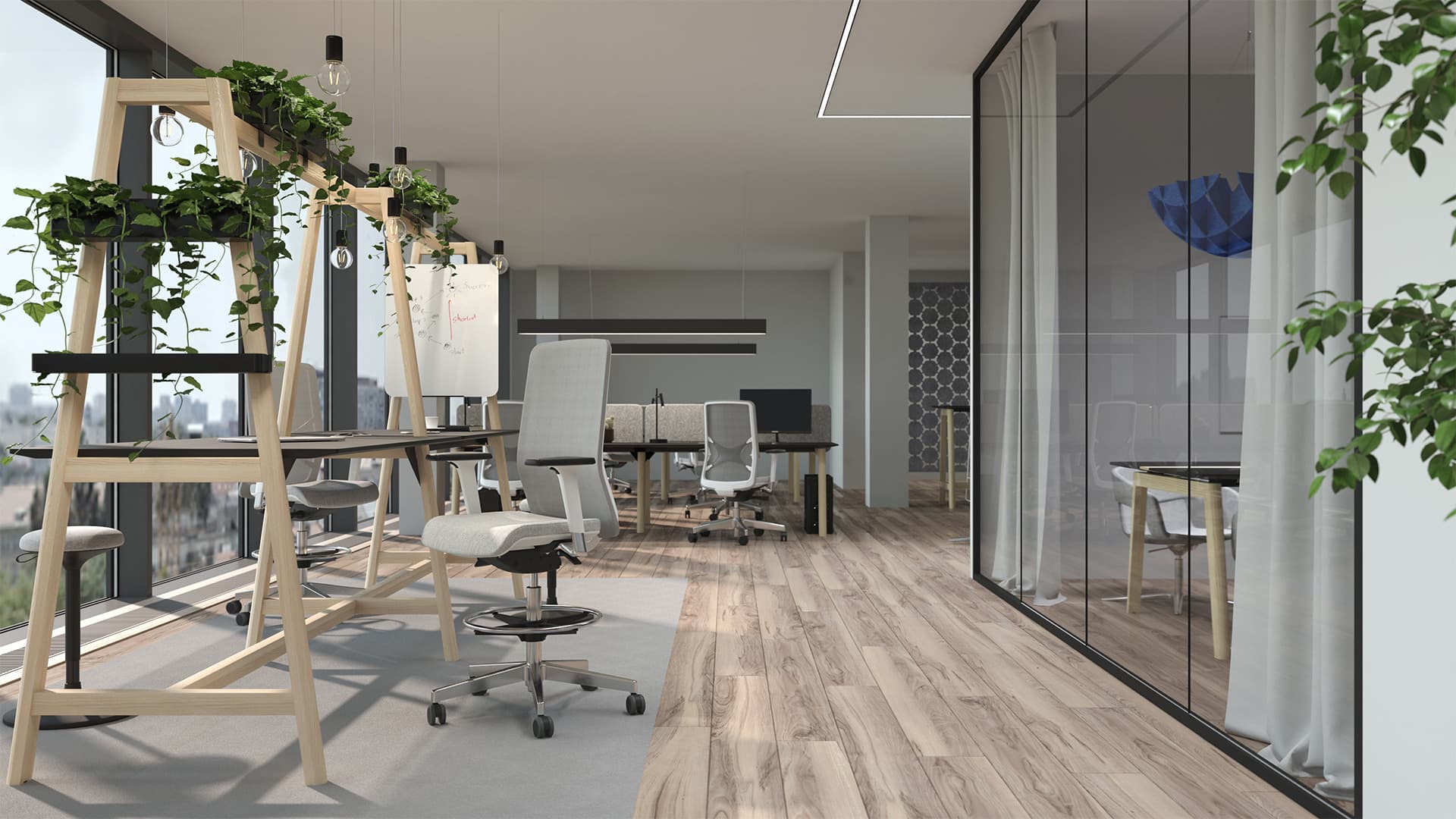Better office life = Higher productivity

Does workspace design improve productivity? It is not news to say that in the past three years the world of work has been profoundly changed by the pandemic and massive introduction of smart working. Yet the latest available research confirms that there is a desire to return to the office. A different office than before, with a workspace design that is smarter, more sustainable, and most importantly, to be attended in a hybrid mode.
It was 2011 when an article appeared in the columns of the Harvard Business Review website entitled. "The Happiness Dividend". A milestone in the study of the relationship between workspace design and
productivity. To the point that the influential Forbes magazine quotes it, without questioning its validity, a
full decade later.
The numbers provided by the HBR study are interesting: a good level of satisfaction among one's
employees is worth, on average, a 31 percent increase in business productivity, a 37 percent increase in
sales, and a 19 percent improvement in the accuracy of performing one's tasks.
But, even more interestingly, it turns out that employee satisfaction is not just about salaries. But the
"promotion of a pleasant and healthy way of working, creating conditions and spaces where employees can feel fulfilled and stimulated." In short … a mix of soft elements (relationships) and hard elements
(workspace design).
Michael Page, a company that understands human resources, in the pages of its blog, states. :
"The latest psychological research helps to identify elements that can be easily acted upon to create a
productive and comfortable work environment: the presence of plants and natural elements increase
attention spans, the personalization of the workstation increases mental well-being, and having wallboards and markers close at hand stimulates the production of ideas."
The elements emphasized by Michael Page can be codified schematically at several points:
- An office, which provides employees with a comfortable and pleasant work space that helps them focus and feel comfortable during working hours, can increase employee motivation and satisfaction. Satisfaction, which in turn helps improve productivity.
- Good lighting, appropriate temperatures, and good acoustics can greatly improve the quality of the work environment. In addition, the addition of plants, decorations and furniture tints in pleasant colors can help create a more welcoming and relaxing atmosphere.
- A welcoming office provides more opportunities for collaboration and communication among employees. Creating common spaces such as meeting rooms, lounge spaces, and shared work areas can increase the opportunity for interaction and exchange of ideas. This can increase employee motivation, creativity and productivity by demonstrating, through the intelligent use of workspace design, that people work together to achieve common goals.
- A welcoming work environment also helps reduce stress and fatigue. By providing a break area, a fully equipped kitchen, and other amenities such as a game room or fitness area, employees can take a break when they need one to recharge their batteries. Just the thought of having a place to relieve fatigue and stress can increase productivity.
It will be objected that all these observations are now part of a world that no longer exists. That the
pandemic, by introducing new ways of working, has swept away all the certainties that had settled down
over the years in relation to the psychology and sociology of work.
However, confirmation that better office life means better productivity also comes in recent times.
Precisely from a Nomisma study, published in January 2023 , and carried out in collaboration with 10
companies and 500 employees in the Milan area.
If, as the main element of the office of the future, it emerges that this will be smart and sustainable, it is
very interesting to examine the final report slides. That is, those relating to the criteria for choosing, in
employees' perceptions, the ideal corporate office.
What emerges does not deviate much from what was discovered by The Happiness Dividend, the article
cited at the opening of this piece: these are both hard elements, such as proximity to the subway, the
structure of the building, the organization of light, greenery and space, and its location within the city, and soft aspects, which impact the person's professional growth and the organization of his or her work in the company (e.g., the smart working hybrid).
Although in the immediate post-COVID period it was believed that the quintessential workplace, the office, would be replaced by entirely smart modes, some time later the reality shows that the office is destined to remain a priority place in which to work. There are several reasons for this:
- Social interaction: working in the office enables interaction with colleagues and superiors, creating personal relationships and increasing collaboration.
- Work-life separation: working in the office helps create work-life separation, improving productivity and reducing stress.
- Access to resources: working in the office provides access to resources such as equipment, libraries, and meeting rooms that may be difficult to replicate at home.
- Career development: being present in the office can be important for one's professional development and growth opportunities.
Last but not least, an organized workspace design that is spacious, bright, green, smart and sustainable can increase motivation and productivity.
We provide workspace design technologies and solutions for companies to create efficient and stimulating environments that increase employee satisfaction and productivity to generate essential competitive advantage and attract new talent.



